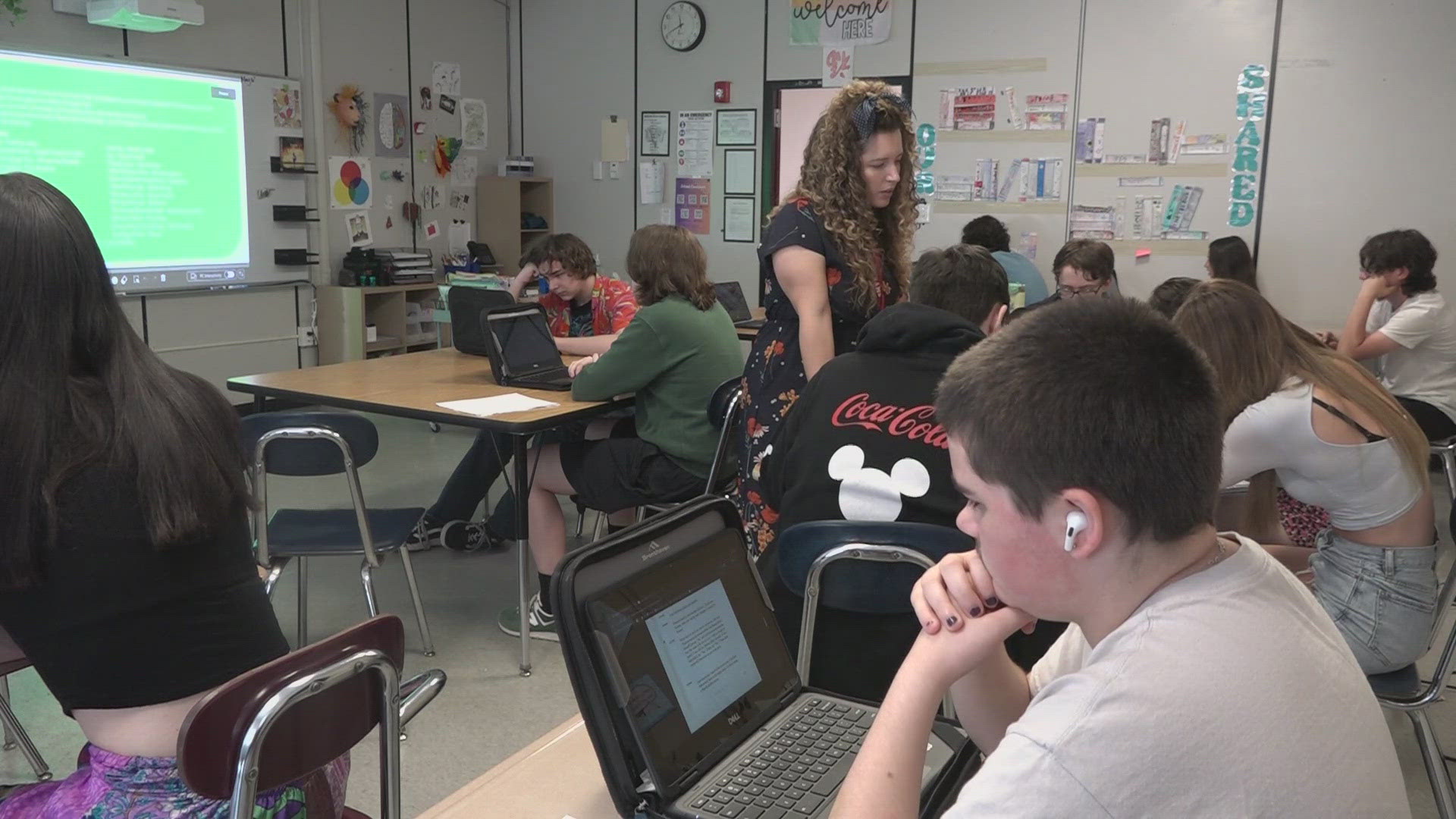BANGOR, Maine — According to the Maine Department of Education, last year 27 percent of all students attending public schools statewide were chronically absent, and now one school district in central Maine is taking an unconventional approach to motivate students to show up.
The Bangor School Department is implementing mentor programs at every school in the district. Superintendent James Tager said at some elementary schools like Fairmont, every student has a mentor, whether that mentor is a teacher, a school counselor, or even the school custodian.
High school students have a built-in 30-minute class session to meet with mentors in groups. During the sessions, students are able to talk to teachers or administrators about things they are experiencing or personally struggling with, get help or assistance applying for driver's licenses, colleges, and more.
"Our lingo has kind of changed a little bit. It's not like 'why weren't you here yesterday?' as opposed to 'we're so glad you're here today,'" Tager said.
The district has a yearly goal of reaching 95 percent student attendance. Tager said seven out of 10 schools in the district are close to meeting that goal.
Data from MDOE shows that last year, 24.55 percent of elementary school students in Bangor were chronically absent. Percentages were even higher for students attending secondary schools, with 42.97 percent of students who attended middle and high school schools combined deemed as chronically absent.
Students are considered chronically absent if they miss 10 percent or more of the total days of the school year, regardless of whether those absences are excused or unexcused. That totals to about 18 missed days.
Just over nine percent of all students in the state were identified as truant. Truancy is solely based on unexcused absences and varies based on grade level.
Maine statute Title 20-A states that any student who has completed sixth grade and who has had 10 unexcused absences or has missed seven full consecutive unexcused days is considered truant. A student who is at least six years old and who has not completed sixth grade, but who has had seven full unexcused absences or who has missed five consecutive unexcused days is also considered truant.
The Legislature also details that if a child is at least five years old, has not completed sixth grade and has missed seven full unexcused days of school or five consecutive unexcused days of school, they are considered truant.
Tager said the effects of the pandemic are still crippling the education system, and as a result, students' perspective on school and attending school in person has drastically changed.
"During COVID, everybody got used to staying home, and kids did as well, and families," he said. "After that happened across the country, a lot of kids didn't come back."
Tager said he doesn't believe a punitive system that penalizes students and parents when they are chronically absent or when they are at risk of being truant is beneficial. Instead, he said he believes the mentoring programs the district has implemented may be the formula for decreasing absenteeism.
"There's students every day that if they have one person that they want to see as a significant adult we can get them in the building," Tager said.
For some high school students, Emilie Throckmorton is the person who reels them back in when they are one step out of the door.
"These are sometimes 17- or 18-year-old kids who are making decisions for themselves," Throckmorton said. "And their parents can't necessarily make them come, so that's where we come in. I mean, I hear from parents all the time. They feel frustrated that their student is not necessarily making the right decision."
Recognizing that every student's situation is different, Throckmorton said she works to provide students who are at risk of not graduating with learning options, sometimes offering them hybrid schedules or later school start times.
"We really want to show kids that we want to give you this ticket to success," she said. "That you're going to have more job opportunities and make more money in your life and be more secure if you get that diploma."
Throckmorton said the ultimate goal is to get students to come back every day, and Tager said as the county's teacher of the year, she has been successful in doing that.
"She's brought students back to school who never thought they could make it and they're going to have that opportunity to walk across the stage in a couple of weeks," Tager said.
Throckmorton said every school has a team of people who work hard to invest in their students and to work with them when obstacles that hinder them from attending school regularly arise.
"I work hand-in-hand with the guidance counselors and the social workers," she said. "They'll do a home visit, and they'll talk to kids about maybe doing a hybrid version of school where they're doing some classes in person and some classes online. There's just a lot of creativity that sometimes surprises students that we can come up with a plan that works for everybody."
Tager said the state does not have truancy officers, which leaves the school principals and the district to decide whether a student is truant and initiate an intervention plan.
Bangor schools' overall percentage of students who were chronically absent last year was 25 percent, but data from MDOE shows that some districts had rates as high as 86 percent.
Editor's Note: The original article defined chronic absenteeism as missing 10 or more days of school for any given reason. That definition was incorrect. The article has since been corrected to define chronic absence as missing 10 percent or more of the total days in a school year for any given reason.

